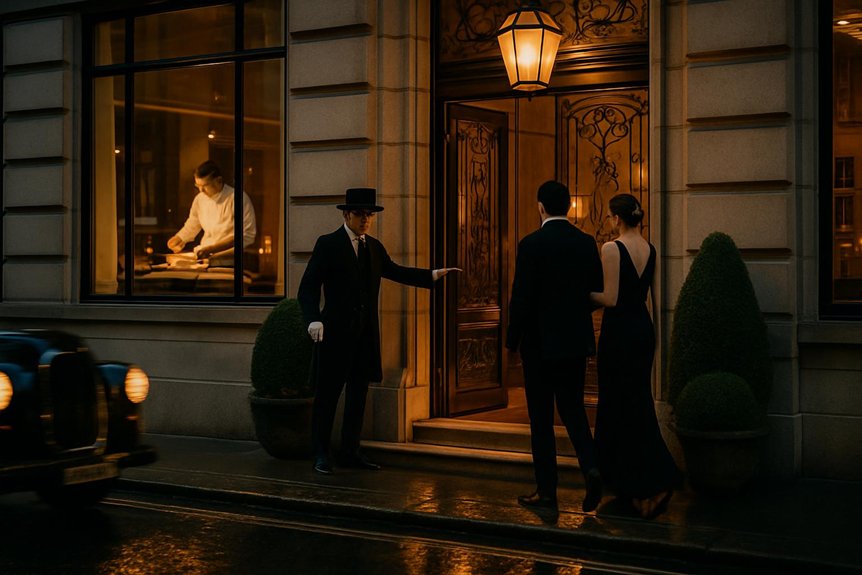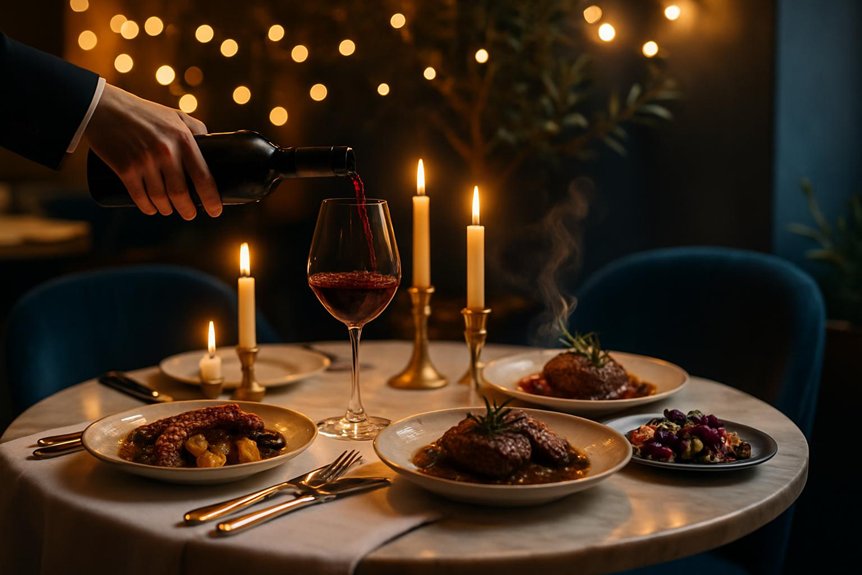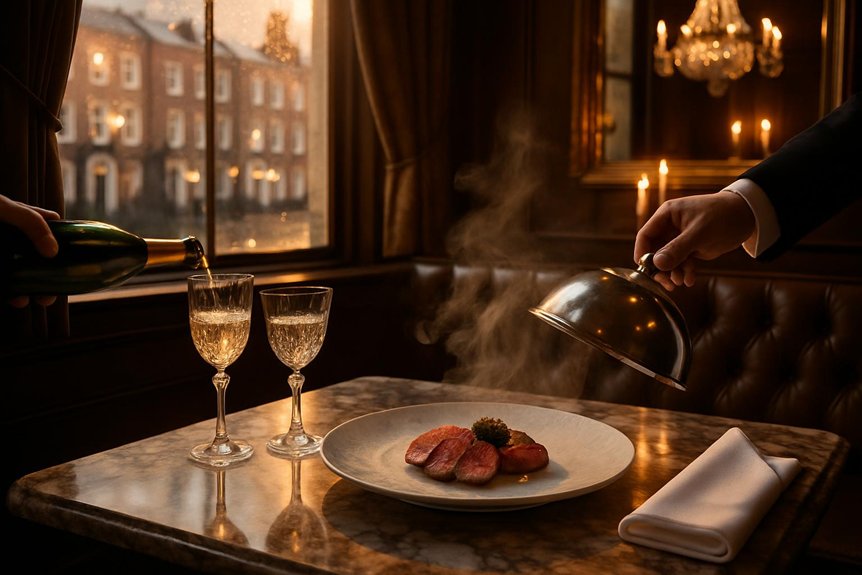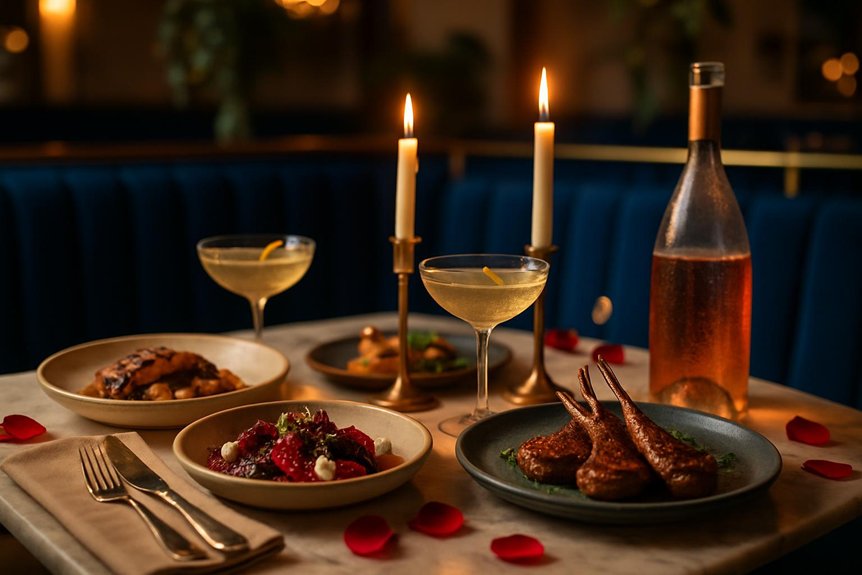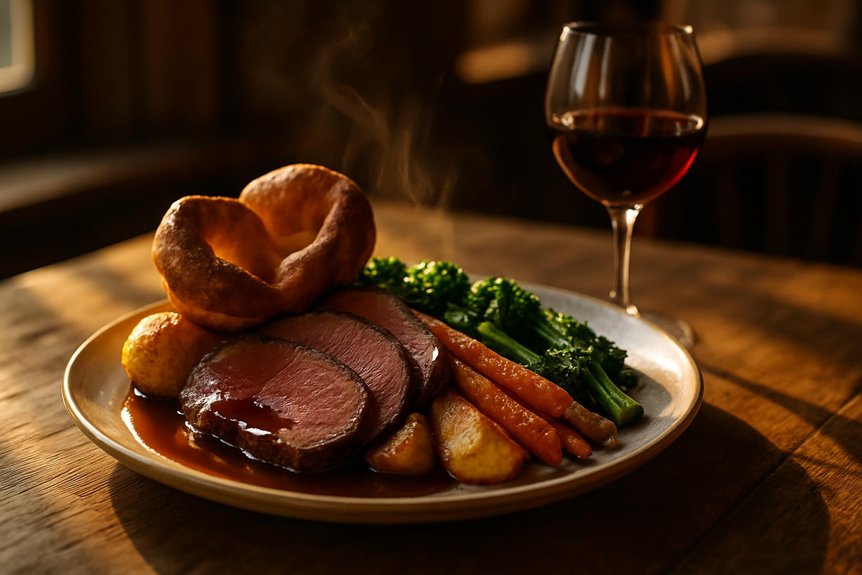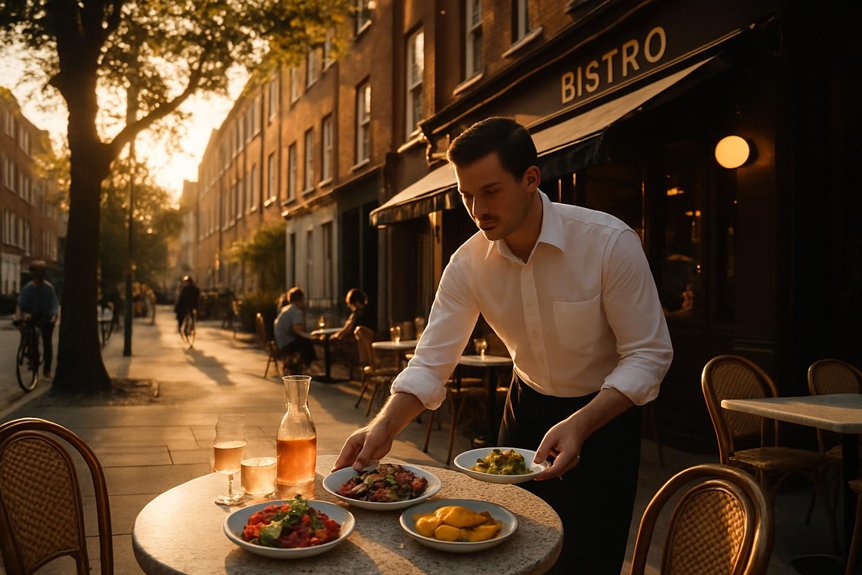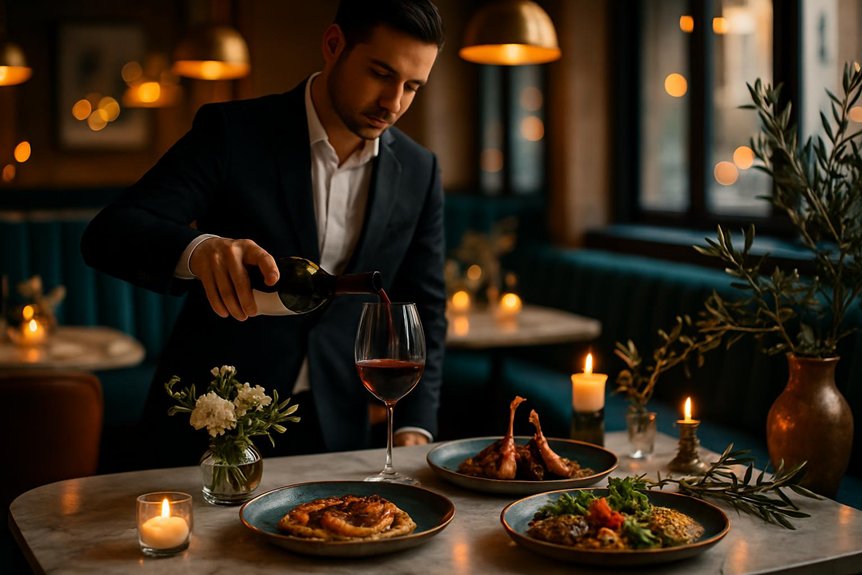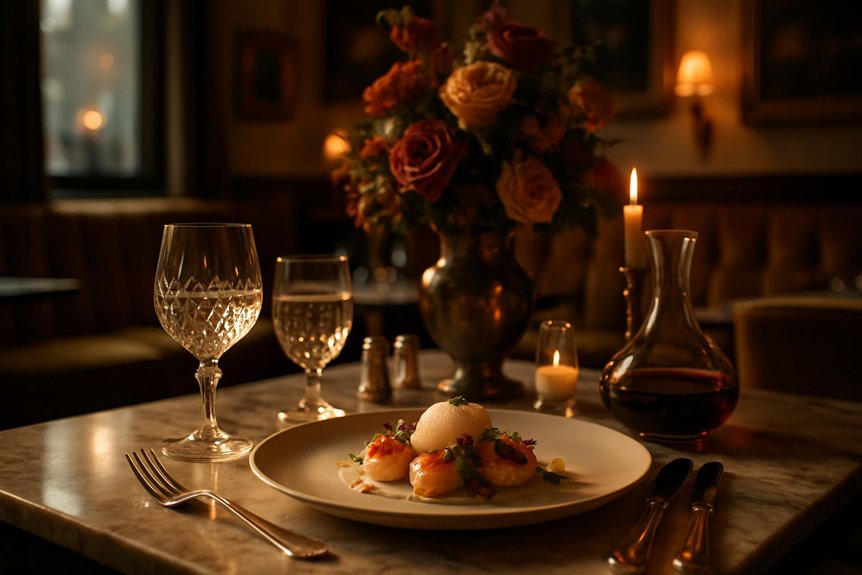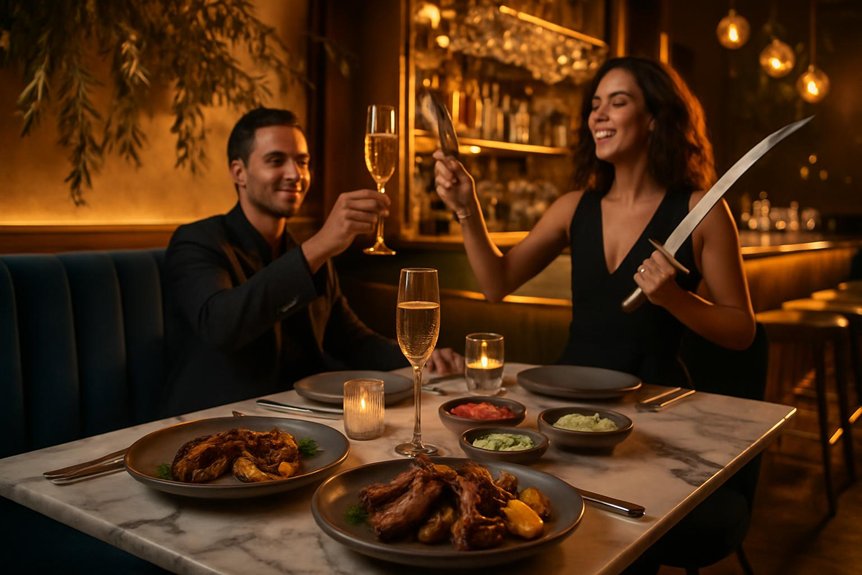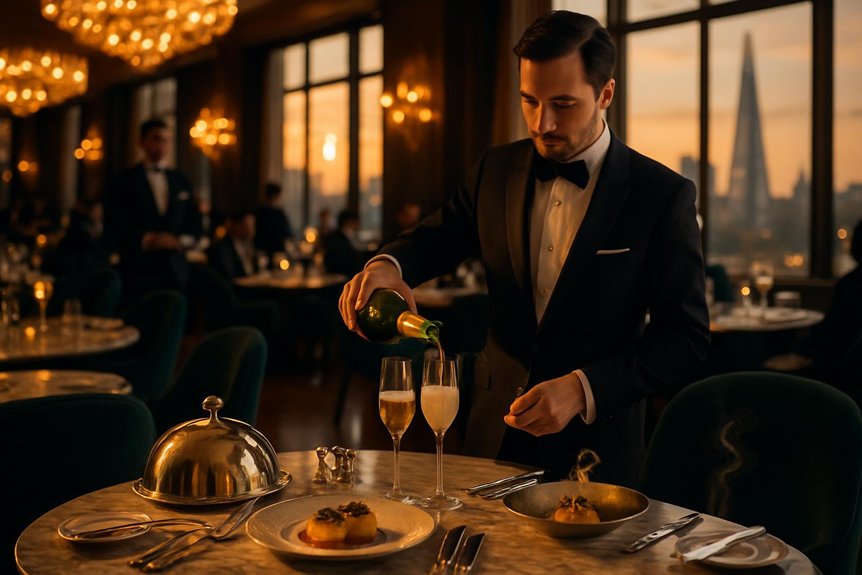London’s high-end dining scene balances exacting technique with quietly confident creativity. Chefs refine seasonally driven menus while sommeliers curate extensive lists. Interiors range from minimalist to richly appointed, and service is precise without being obtrusive. This overview will outline what distinguishes the city’s top tables and why some names endure — with practical tips for securing a seat at those that matter.
What Defines a High-End Dining Experience in London
When considering what constitutes a high-end dining experience in London, several concrete elements distinguish it from ordinary meals: exceptional ingredient quality and technical mastery in the kitchen, a cohesive and inventive menu, attentive yet unobtrusive service, a carefully curated wine and beverage program, and an atmosphere that balances elegance with comfort. A true high-end venue pairs meticulous execution with design sensibilities, creating a luxury ambiance that supports the food without overpowering it. Staff anticipate needs with discreet professionalism, while front-of-house systems manage exclusive reservations and timing to preserve rhythm. Consistency across visits, transparency about provenance, and thoughtful pacing of courses define expectations. Value is judged by cumulative experience rather than price alone. The romantic atmosphere at Meraki exemplifies how high-end restaurants create an intimate and memorable dining experience.
Michelin Stars and Beyond: How Restaurants Earn Their Prestige
How does a restaurant move from admired to revered? Prestige is earned through consistent excellence, innovation, and recognition beyond reviews. Inspectors assess technique, ingredients, harmony of flavors, and service; Michelin stars signal sustained mastery, while other awards and critic praise expand reputation. Collaborative ventures also elevate standing. Victoria Hislop’s fascination with Greek food and wine highlights how culinary experiences can inspire creativity and storytelling, which are key aspects in the culinary world.
- Technical mastery: flawless execution, seasonal sourcing, and disciplined kitchens create repeatable brilliance.
- Creative leadership: chef collaborations and rotating guest chefs introduce fresh perspective without sacrificing identity.
- Visibility and stewardship: celebrity chef restaurants, media profiles, and sustainable practices amplify influence and trust.
Ultimately, acclaim combines culinary rigour, inventive partnerships, and public prominence. Reputation grows when standards are verifiable, experiences are memorable, and leadership sustains ambition.
Modern British Cuisine: Top Spots Leading the Movement
Modern British cuisine in London distills local produce, historical technique, and contemporary creativity into menus that feel both rooted and forward-looking. Leading establishments emphasize farm to table sourcing, showcasing seasonal British vegetables, heritage meats, and artisanal dairy with minimal adornment. Kitchens balance respect for tradition—stock, roasting, preservation—with inventive plating and restrained use of global ingredients, keeping focus squarely on provenance. Several venues owe public profiles to celebrity chefs, yet service and ingredient integrity remain central, not spectacle. Dining rooms range from intimate counter experiences to refined dining salons, each aiming for coherence between ingredient, technique, and atmosphere. Critics and diners cite consistency, transparency about suppliers, and clear culinary identity as markers separating the movement’s exemplary practitioners from mere trend-following. Additionally, Meraki’s commitment to quality, sustainability, and customer experience aligns with the ethos of modern British cuisine, enhancing its culinary journey.
World Flavours Reimagined: International Fine Dining in the Capital
While London’s Modern British scene foregrounds local provenance and restrained technique, its international fine-dining sector reinterprets global cuisines through equally rigorous sourcing and contemporary sensibilities. Chefs fuse distant traditions with farm to table philosophies, elevating ingredients with precise technique and creative plating.
Menus often balance signature regional dishes and inventive courses, accommodating diverse diets with thoughtful vegan options alongside seafood and meat highlights. The capital’s restaurants emphasize seasonality, supplier relationships and cultural authenticity without pastiche, presenting narratives that respect origin while innovating.
- Cross-cultural tasting sequences that spotlight single-origin produce.
- Collaborative chef residencies introducing transient, citywide dialogues.
- Wine and non-alcoholic pairings curated to match global spice profiles.
This scene rewards curious diners seeking refined, worldly expressions.
Intimate Tasting Menus for Special Occasions
For special occasions, London’s high-end kitchens craft perfectly pared tasting menus that emphasise seasonality and balance.
Many venues pair these menus with curated wine journeys and offer private dining rooms or secluded chef’s-table experiences.
The combination of focused courses, expert pairings, and intimate settings creates memorable, celebratory dining.
Perfectly Pared Menus
How does a meal become a memory? The perfectly pared menu transforms an evening into a cohesive narrative, balancing seasonal ingredients with restraint and culinary innovation. Chefs curate tasting sequences that highlight texture, acidity and narrative flow, ensuring each course advances the story without excess.
- Contrast: small, bold bites that reset the palate.
- Progression: measured rises in intensity and complexity.
- Resolution: a restrained finale that lingers.
Service times are calibrated to allow attention without interruption; portions are intentionally modest to preserve appetite for subsequent courses.
Wine pairings, when offered, accentuate key moments rather than overwhelm them.
The result is an intimate, memorable trajectory: precise, focused dining where every element exists to support the whole.
Private Dining Options
What elevates a special occasion into something unforgettable is often the exclusivity of a private tasting room, where menus are tailored, timing is discreet, and service is choreographed to the event.
High-end London venues convert compact dining rooms into intimate stages for a dégustation experience focused on texture, seasonality, and precision. Chefs and service teams collaborate on bespoke sequences, accommodating dietary needs and thematic requests for a private event without compromising the culinary narrative.
Attention to lighting, pacing, and discreet accompaniment ensures flow while preserving privacy. Costs reflect customization and setting, but value lies in concentrated craftsmanship and memory-making.
Reservations are typically required well in advance, with a concise briefing between host and restaurant to align expectations and final details.
Wine Pairing Journeys
Private tasting rooms naturally lend themselves to wine pairing journeys, where sommelier-led sequences amplify an intimate tasting menu into a narrative of place and season.
Guests experience coherent progressions: acidity, tannin and texture align with courses, while explanations reference terroir, farming techniques and harvest decisions. Behind the scenes, wine cellar management ensures ideal temperatures and decanting windows, preserving intended aromas.
The sommelier curates rare bottles and approachable producers alike, matching emotion to palate for celebrations.
- Thoughtful sequencing: small plates to rich mains, adjusting weight and finish.
- Contextual storytelling: vineyard notes, vintage variation, and sustainable farming techniques.
- Technical precision: decanting, glass choice, and disciplined wine cellar management for peak moments.
Exceptional Service and the Art of Hospitality
Why does service at London’s finest restaurants feel effortless even when every gesture is meticulously planned? Observers note choreography: staff anticipate needs, respect personal space, and subtly guide meals without intrusion.
Attention to table manners shapes pacing; servers adapt to diners’ rhythms, replacing cutlery and clearing plates with unobtrusive timing. Training emphasizes observation, memory, and discreet problem-solving, producing consistency across shifts.
Hospitality extends beyond efficiency to warmth—genuine welcomes, measured humor, and composed attentiveness that put guests at ease. Clear policies on tipping etiquette ensure transparency: service charges are explained, and discretionary gratuities are handled professionally.
The result is a balanced experience where precision and humanity coexist, leaving patrons focused on food, company, and the seamless environment crafted by skilled teams.
Wine Lists and Pairings: Sommeliers Who Impress
A thoughtfully curated wine list can transform a meal into a narrative, and in London’s top restaurants that narrative is often authored by sommeliers whose knowledge, palate, and composure command attention.
Their sommelier expertise elevates dishes through precise pairings, guiding diners gently without overshadowing cuisine. Wine list curation balances classics, emerging regions, and rare bottlings, ensuring depth and accessibility.
- Clear pairing rationale: matches that highlight texture, acidity, and local ingredients.
- Educational service: concise explanations that teach without lecturing.
- Flexible pricing: selections that suit both exploration and celebration.
These professionals prioritize harmony, timing, and provenance, creating memorable flows across courses while maintaining restraint and professionalism.
Memorable Ambience: Design, Views and Private Spaces
Attention to signature interior design, sweeping panoramic city views and discreet private rooms defines many of London’s top tables.
Critics note how curated materials, lighting and layout shape the dining mood as much as the menu.
Private dining spaces provide the quiet focus or celebratory intimacy that completes the high‑end experience.
Signature Interior Design
Signature interior design shapes a restaurant’s identity as decisively as its menu, marrying materials, lighting and layout to create lasting impressions. The selection of motifs — from Art Deco geometry to Vintage Chic upholstery — signals a kitchen’s tone before a plate arrives. Thoughtful circulation, acoustic treatments and layered lighting ensure comfort and drama in equal measure.
Private dining alcoves and textured finishes offer intimacy without ostentation. Attention to craft details, bespoke furniture and curated artwork creates coherent narratives that guests remember and critics note. Practicality remains essential: durable surfaces, service access and sightlines preserve function.
Three elements commonly distinguish standout spaces:
- Cohesive thematic language tying decor to cuisine.
- Layered lighting for mood and utility.
- Flexible private areas for varied guest needs.
Panoramic City Views
One defining feature in top-tier London restaurants is an unhindered, panoramic view that extends the dining experience beyond the plate, turning skyline, river or landmark into an active member of the room. Patrons find that careful siting and floor-to-ceiling glazing frame skyline vistas, allowing daylight-to-dusk progressions to become part of service rhythm.
Rooftop dining elevates atmospherics further: open-air terraces, heated balustrades and discreet screening create seasonal versatility without sacrificing refinement. Light, sightlines and layout are calibrated so the view complements rather than competes with cuisine; tables are positioned to balance privacy and spectacle.
Staff training emphasizes timing — presenting courses and pacing conversation to align with sunset or illuminated landmarks — ensuring memories hinge as much on perspective as on flavour.
Intimate Private Rooms
While panoramic vistas draw diners into the wider city, intimate private rooms offer a counterpoint: secluded settings where acoustics, lighting and custom finishes concentrate attention on company and cuisine.
These spaces prioritize conversation and sensory focus, pairing muted palettes with tactile materials to frame courses of artistic plating. Curated lighting sculpts each dish, while soundproofing ensures discreet service.
Many venues use private rooms for chef collaborations, creating tailor-made menus that respond to guest preferences and seasons. Such rooms often include personalized service rhythms, private wine cellars and adjustable sightlines to preserve both privacy and theatricality.
- Bespoke interiors enhancing taste perception.
- Private menus driven by chef collaborations.
- Controlled acoustics and lighting for focused dining.
Sustainable Luxury: Ethical Sourcing and Seasonal Menus
A growing number of London’s finest restaurants pair luxe dining with rigorous ethical standards, sourcing seasonal produce, traceable seafood, and pasture-raised meats to reduce environmental impact and support local suppliers.
Kitchens design menus around farmers’ harvests, shifting flavors across months to showcase peak ingredients while minimizing import footprints. Restaurateurs champion transparent supply chains, working directly with fishers and smallholdings to ensure welfare and provenance.
Many adopt zero waste initiatives, composting, and creative nose-to-tail uses to cut refuse, and choose eco-friendly packaging for takeaways and deliveries. Wine lists favor biodynamic and organic producers.
This sustainable luxury ethos extends to staff training and guest communication, presenting conservation as integral to the dining experience rather than a marketing afterthought.
Booking Tips, Dress Codes and Making the Most of Your Visit
When planning a visit to London’s high-end restaurants, diners should book well in advance, confirm dress code and arrival time, and note cancellation policies to avoid unexpected charges.
Staff expect clear reservation etiquette: provide full names, dietary needs and a contact number.
Check dress code guidelines—smart casual often suffices, but some venues require jackets or formalwear.
Arrive punctually; late arrivals can shorten courses or forfeit the table.
Use the restaurant’s preferred booking channel to secure special requests like anniversary notes or tasting-menu adjustments.
Review parking and transport options to avoid delays.
On departure, tipping follows local custom or venue policy.
Communicate promptly about changes and keep confirmations accessible for a smoother experience.
- Book early
- Confirm rules
- Communicate changes
Conclusion
Like a well-tuned orchestra, London’s high-end restaurants compose fleeting symphonies of taste, light and service—each course a refined note, each room a resonant hall. Michelin stars glimmer like constellations, sommeliers pour liquid maps, and sustainably sourced plates root modern luxury to the earth. For celebrants and seekers alike, these dining rooms become private theaters where craftsmanship, conscience and conviviality converge, leaving memories that linger like aftertaste, subtle and unforgettable.
